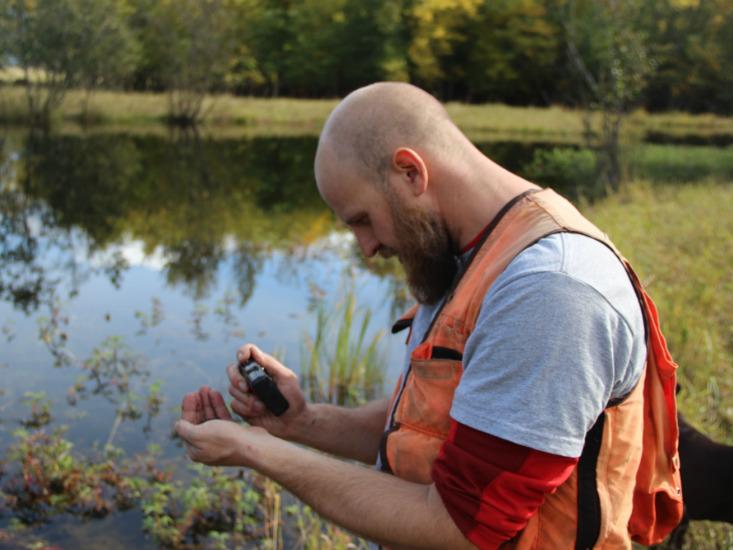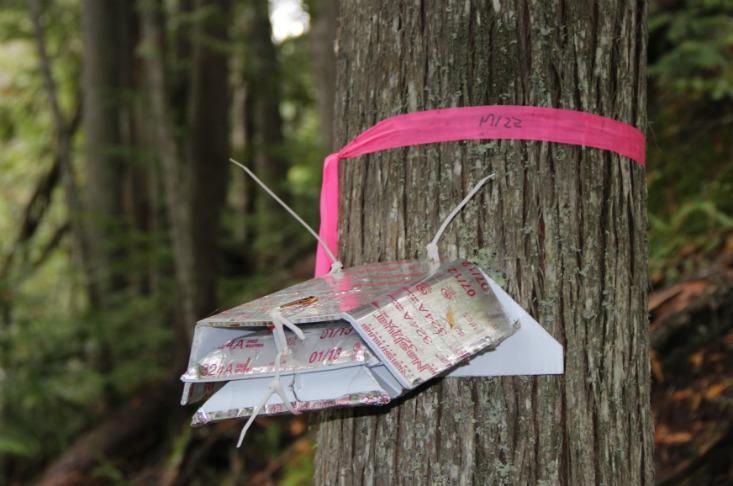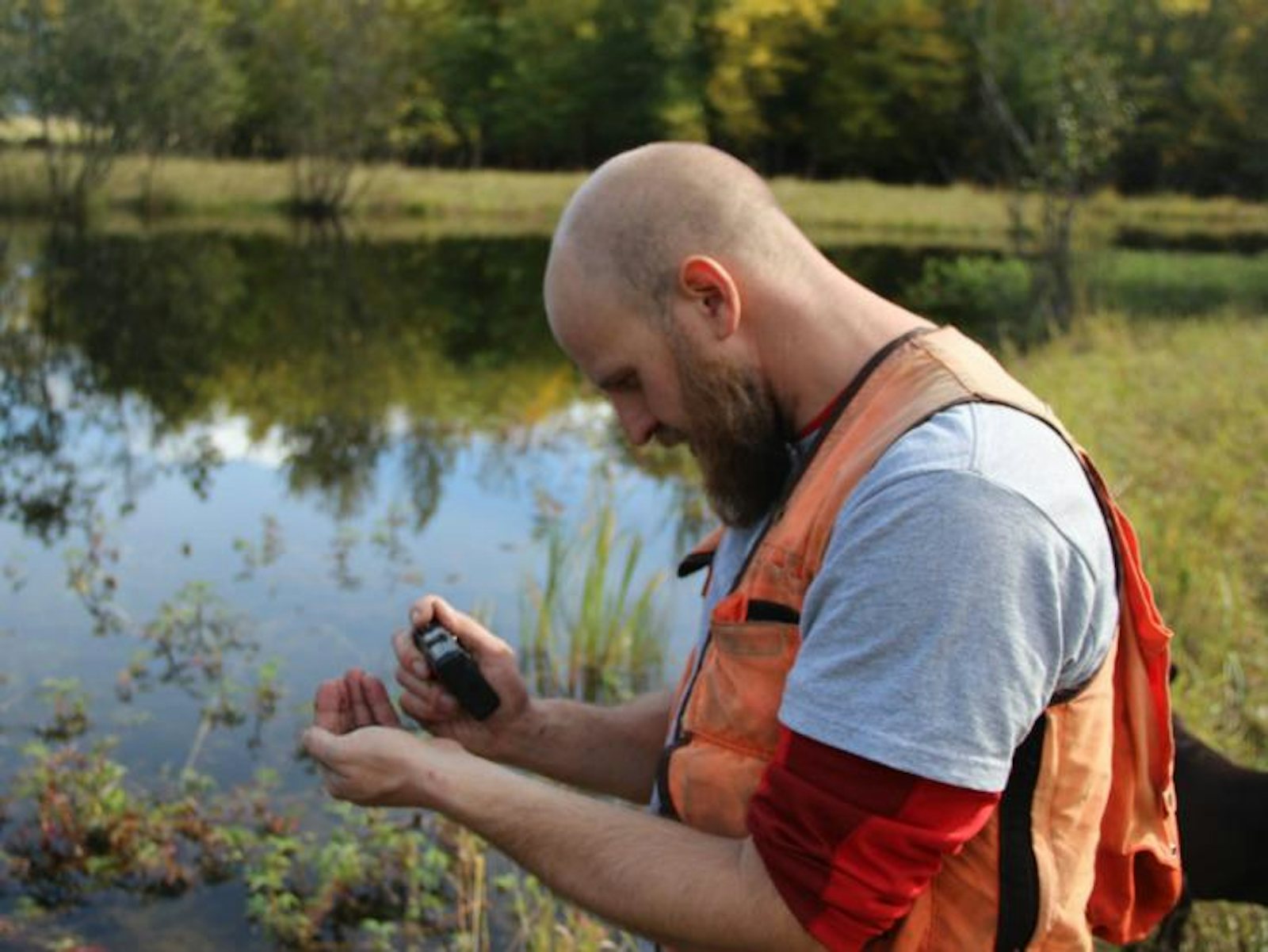
In 2010, Michael Lucid, a biologist with the Idaho Department of Fish & Game, captured a surprise in a beer-baited gastropod trap—a slug that didn’t genetically resemble any of the ones he’d caught before. On a hunch, Lucid sent the mysterious invertebrate to an expert in North Carolina; soon after, the expert called back. Lucid’s slug, it turned out, was possibly a new species, with one special trait: It was equipped with a gigantic penis.
The well-endowed gastropod is among the many oddities uncovered by an ambitious research project called the Multispecies Baseline Initiative (MBI). Supported by a $950,000 grant from the U.S. Fish and Wildlife Service, MBI aims to inventory the complete biodiversity of Idaho’s panhandle, a mountainous, lush ecosystem that, according to Lucid, remains as intact as Yellowstone—but only a fraction as studied.
Lucid and fellow biologist Lacy Robinson, his partner in research and in life, have spent the better part of five years surveying a wide range of taxonomic groups, from beetles to mustelids, at over 800 field sites in the panhandle. The two scientists are especially focused on 20 “species of greatest conservation need,” an eclectic group of organisms—including the tiger salamander, the lyre mantleslug, and the wolverine—whose population status is worrisome or unknown. By identifying the species’ habitat and climatic preferences, Lucid hopes to figure out how development and climate change will affect this cryptic fauna.
“We’ll end up with five years of data about the microclimate requirements of these species,” says Lucid, whose shaved scalp and wiry goatee can seem, at first, more biker than biologist. “But the first step is to see if they’re actually on the landscape.”
To that end, Lucid, Robinson, and I spent a clear morning last fall sloshing through wetlands in the foothills of the Selkirk Mountains, plunging dip nets into murky water in search of amphibians. We were hunting, not very optimistically, for two frogs in particular: the wood frog and the northern leopard frog, neither of which has been seen in Idaho in decades. While we didn’t find them that day, it’s a testament to the panhandle’s wildness that the long-lost frogs may yet materialize. In 2010, the study turned up a magnum mantleslug, a creature that hadn’t been identified in Idaho since 1948.

Once winter descends, MBI’s fieldwork shifts gears, from frogs and slugs to carnivorous mammals. Since 2010, the crew has set up 498 bait stations—camera traps and hair snares coupled with a beaver carcass, sometimes known as “carnivore candy” among biologists. “There’s a great layer of fat under the skin and tail,” says Robinson, who turns almost wistful as she explains why beavers make the best wolverine attractant. “A beaver carcass is just a great piece of meat.”
With an assist from the beavers (purchased each year from a licensed trapper in Oregon), the bait stations have attested to Idaho’s mammal diversity. Fishers—large members of the weasel family that are among the few predators capable of preying on porcupines—are more abundant than anyone had suspected. One wolverine appears to go back and forth between Idaho and British Columbia. Wolves, mountain lions, and grizzlies all prowl the panhandle’s forests. And in 2012, an MBI camera snapped a shot of perhaps the only resident lynx in the Purcell Mountains.
To monitor the panhandle’s 21,000-square-mile expanse, Lucid and Robinson have relied on citizen scientists to check camera traps, hunt for salamanders, obtain access to private lands, and even hack up the occasional beaver carcass. “These wildlife studies are fantastic ways of engaging people,” says Phil Hough, executive director of Friends of Scotchman Peaks Wilderness, a local environmental group that has trained over 150 volunteers and supplied MBI with more than 2,000 hours of unpaid labor. “People will do something about places they care about, and they’ll care about places they see.”
The study is also a preemptive strike against extinction. In a world lacking in long-term baseline data sets, MBI should help the state of Idaho protect species before they enter irreversible declines, forestalling animals from being placed on the federal endangered species list (and perhaps preventing the federal government, not the most popular entity in the deep-red Idaho panhandle, from getting involved in local wildlife management). “Let’s say we figure out that a certain snail needs west-facing slopes,” says Lucid by way of example. “We can plan timber sales to account for that.”
Later this summer, Lucid and Robinson will wrap up their final weeks of MBI fieldwork before embarking on the data analysis that will inform future conservation efforts. As for the well-hung slug that turned up in the beer trap, Lucid hopes it will emerge as a poster animal, helping to draw volunteers for less glamorous chores in the future, like sifting through leaf litter. “We’ve got a beer-swilling slug with an enormous penis,” he says. “If that doesn’t get us more support for gastropods, nothing will. Maybe we’ll have a naming contest.”






























